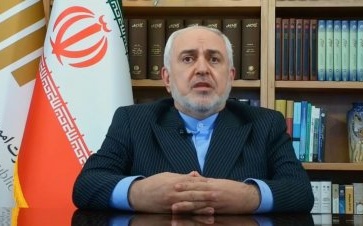Iran Foreign Minister Zarif: “US has a limited window of opportunity”
UPDATE, FEB 3:
The US State Department has reacted coolly to Iran’s shift over talks about the 2015 nuclear deal, although it has not rejected the statement by Foreign Minister Mohammad Javad Zarif.
Department spokesman Ned Price said:
We’re going to consult closely with our allies and partners….We’re also consulting with members of Congress, so we haven’t of course haven’t had any discussions with the Iranians, and I wouldn’t expect we would until those initial steps go forward.
Another US official said Price’s comments had not pushed away Zarif’s suggestion to “synchronize” Iran’s return to compliance with the deal and the lifting of US sanctions, with the European Union’s foreign policy head Josep Borrell chairing the discussions.
The official said, “There is no rejection.”
Echoing Price, he continued, “We have not begun negotiating with Iran, or with anyone else, because our priority is to consult” with other parties in the nuclear deal and in the region.
Asked about Zarif’s proposal for synchronization, Price repeated the line of officials such as National Security Advisor Jake Sullivan and Secretary of State Antony Blinken that Tehran must move first:
If Iran comes back into full compliance with its obligations under the JCPOA [Joint Comprehensive Plan of Action], the United States would do the same, and then we would then use that as a platform to build a longer and a stronger agreement that also addresses other areas of concern.
Of course, though, we are a long way from that. Iran has distanced itself from compliance on a number of fronts.
ORIGINAL ENTRY, FEB 2: Iran shifts its line on talks for US re-entry to the 2015 nuclear deal, saying that its compliance with the provisions can be linked to lifting of American sanctions.
Up to Monday, Tehran had maintained that the Biden Administration must revoke comprehensive sanctions, imposed by the Trump Administration in November 2018, before the Islamic Republic pulled back its suspension of provisions.
US officials, including National Security Advisor Jake Sullivan and Secretary of State Antony Blinken, said that Iran must step back from its return to pre-2015 enrichment of 20% uranium and its installation of advanced centrifuges.
See also US, Iran, and the Nuclear Deal — The “You Go First” Dilemma
But on Monday, Iranian Foreign Minister Mohammad Javad Zarif suggested that the European Union’s head of foreign policy, Josep Borrell, could “choreograph” the steps.
In an interview with CNN, Zarif said, “There can be a mechanism to basically either synchronize it or coordinate what can be done.”
The Foreign Minister portrayed firmness by warning, “The time for the United States to come back to the nuclear agreement is not unlimited. The United States has a limited window of opportunity.”
The Trump Administration withdrew from the accord in May 2018, pursuing “maximum pressure” in an attempt to break the Iranian economy.
While both sides have maintained tough public positions over the deal, agreed between Iran and the 5+1 Powers (US, UK, France, Germany, China, and Russia), there is the possibility of quiet, behind-the-scenes discussions.
In 2012, back-channel talks were held in Oman. After President Hassan Rouhani presented the Supreme Leader in September 2013 with a dossier about Iran’s economic crisis, Ayatollah Khamenei authorized public negotiations that lead to the 2015 agreement.


Dissident Iranian activists call on Biden not to lift sanctions: https://im-media.voltron.voanews.com/Drupal/01live-201/documents/2021-02/Open%20Letter%20to%20the%20Honorable%20Joseph%20R.%20Biden%20President%20of%20the%20United%20States%20of%20America%202021Feb.pdf
A Killing Field Named The Islamic Republic
https://en.radiofarda.com/a/a-killing-field-named-the-islamic-republic/31046942.html